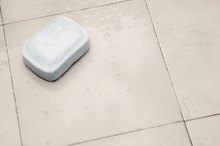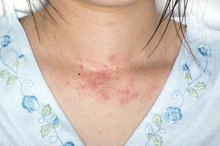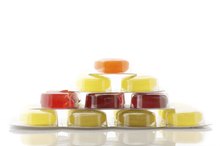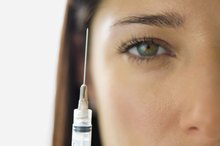Iron Deficiency & Skin
Without iron your body is unable to produce red blood cells, which are the cells responsible with supplying your organs with oxygen. As an essential mineral, iron is typically obtained from your diet. When you are unable to get enough iron, your body develops a variety of symptoms ranging from weakness to difficulty breathing. In some cases, you may develop dermatologic symptoms of iron deficiency.
Pale Skin
A common symptom associated with iron deficiency is pale skin. As your iron levels are depleted, your body is unable to manufacture the chemical hemoglobin, a reddish compound, which is an essential part of red blood cells. When this occurs, you develop a condition called iron deficiency anemia. As anemia worsens, your skin begins to lose its normal color and become pale. If you notice that your skin is paler than usual, consult a doctor and ask about iron deficiency and anemia.
Angular Cheilitis
Care of Skin After Cryosurgery
Learn More
Angular cheilitis is a condition characterized by painful abnormal cracking of the skin near the corners of the mouth. In some cases of iron deficiency, you may develop angular cheilitis. The cracking of the skin near the lips is usually accompanied by slight swelling, redness and, potentially, bleeding. Typically, angular cheilitis resolves once your iron levels have been restored. If the pain is intolerable, your doctor may prescribe pain-relieving creams or corticosteroids.
Pruritus
Pruritus is a severe itching of the skin that is sometimes associated with a noticeable reddening of the affected area. Iron deficiency often causes pruritus, according to a 1991 article published in “Seminars in Dermatology.” Though this problem is mild and does not result in any further complications, noticing this symptom, along with other known symptoms, helps doctors diagnose iron deficiency. Reversing the iron deficiency helps reduce the itchiness.
Treatment for Iron Deficiency
Gluten Intolerance, Skin Hives & Hemochromatosis
Learn More
Causes of iron deficiency range from excessive bleeding to having a diet low in iron. Treating iron deficiency focuses on reversing the underlying cause of the iron loss, as well as iron replacement therapy to replenish your body's iron stores. Iron replacement supplements are available in both tablet and injection form. Always consult your doctor before taking any iron supplement -- taking iron supplements you don't need, or taking too high a dosage, can have serious side effects.
Related Articles
References
Writer Bio
Joseph Pritchard graduated from Our Lady of Fatima Medical School with a medical degree. He has spent almost a decade studying humanity. Dr. Pritchard writes as a San Francisco biology expert for a prominent website and thoroughly enjoys sharing the knowledge he has accumulated.









